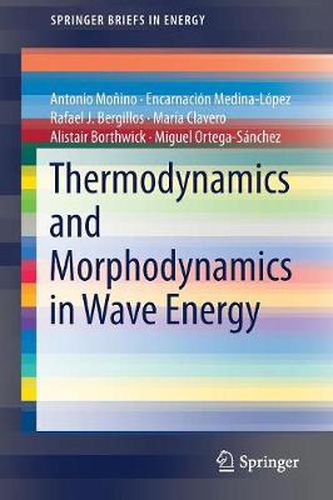Readings Newsletter
Become a Readings Member to make your shopping experience even easier.
Sign in or sign up for free!
You’re not far away from qualifying for FREE standard shipping within Australia
You’ve qualified for FREE standard shipping within Australia
The cart is loading…






This title is printed to order. This book may have been self-published. If so, we cannot guarantee the quality of the content. In the main most books will have gone through the editing process however some may not. We therefore suggest that you be aware of this before ordering this book. If in doubt check either the author or publisher’s details as we are unable to accept any returns unless they are faulty. Please contact us if you have any questions.
This book examines the performance of oscillating water column (OWC) wave energy converters. It discusses the influence of humid air inside the chamber and changes in the seabed, and also investigates the role of wave energy converters in coastal protection.
The authors use a real gas model to describe the thermodynamics of the air-water vapour mixture inside the chamber, and the compression and expansion process during the wave cycle. Further, they present an alternative formulation with new perspectives on the adiabatic process of the gaseous phase, including a modified adiabatic index, and subsequent modified thermodynamic state variables such as enthalpy, entropy and specific heat. The book also develops a numerical model using computational fluid dynamics to simulate OWC characteristics in open sea, and studies the performance of a linear turbine using an actuator disk model. It then compares the results from both cases to find an agreement between the analytical and numerical models when humidity is inserted in the gaseous phase.
Introducing new concepts to studies of wave energy to provide fresh perspectives on energy extraction and efficiency problems, the book is a valuable resource for researchers and industrial companies involved in thermal energy and coastal engineering. It is also of interest to undergraduate and postgraduate students, as it broadens their view of wave energy.
$9.00 standard shipping within Australia
FREE standard shipping within Australia for orders over $100.00
Express & International shipping calculated at checkout
This title is printed to order. This book may have been self-published. If so, we cannot guarantee the quality of the content. In the main most books will have gone through the editing process however some may not. We therefore suggest that you be aware of this before ordering this book. If in doubt check either the author or publisher’s details as we are unable to accept any returns unless they are faulty. Please contact us if you have any questions.
This book examines the performance of oscillating water column (OWC) wave energy converters. It discusses the influence of humid air inside the chamber and changes in the seabed, and also investigates the role of wave energy converters in coastal protection.
The authors use a real gas model to describe the thermodynamics of the air-water vapour mixture inside the chamber, and the compression and expansion process during the wave cycle. Further, they present an alternative formulation with new perspectives on the adiabatic process of the gaseous phase, including a modified adiabatic index, and subsequent modified thermodynamic state variables such as enthalpy, entropy and specific heat. The book also develops a numerical model using computational fluid dynamics to simulate OWC characteristics in open sea, and studies the performance of a linear turbine using an actuator disk model. It then compares the results from both cases to find an agreement between the analytical and numerical models when humidity is inserted in the gaseous phase.
Introducing new concepts to studies of wave energy to provide fresh perspectives on energy extraction and efficiency problems, the book is a valuable resource for researchers and industrial companies involved in thermal energy and coastal engineering. It is also of interest to undergraduate and postgraduate students, as it broadens their view of wave energy.